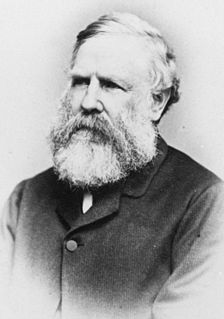Related Research Articles

The House of Assembly, or lower house, is one of the two chambers of the Parliament of South Australia. The other is the Legislative Council. It sits in Parliament House in the state capital, Adelaide.

The Division of Wakefield was an Australian electoral division in the state of South Australia. The seat was a hybrid rural-urban electorate that stretched from Salisbury in the outer northern suburbs of Adelaide at the south of the seat right through to the Clare Valley at the north of the seat, 135 km from Adelaide. It included the suburbs of Elizabeth, Craigmore, Munno Para, and part of Salisbury, and the towns of Balaklava, Clare, Freeling, Gawler, Kapunda, Mallala, Riverton, Tarlee, Virginia, Williamstown, and part of Port Wakefield.

Captain John Hart CMG was a South Australian politician and a Premier of South Australia.
Gilles was an electoral district of the House of Assembly in the Australian state of South Australia from 1970 to 1993.
Albert Park was an electoral district of the House of Assembly in the Australian state of South Australia from 1970 to 1993.
Ascot Park was an electoral district of the House of Assembly in the Australian state of South Australia from 1970 to 1985. It was preceded by the seat of Edwardstown and replaced by the seat of Walsh.
Burnside was an electoral district of the House of Assembly in the Australian state of South Australia from 1938 to 1970. Before 1938 the Burnside area was represented by the three-seat multi-member electorate of Sturt. It was abolished in the 1970 parliamentary reforms, and was replaced with Bragg.
East Adelaide was an electoral district of the South Australian Legislative Council from 1851 to 1857 and an electoral district of the South Australian House of Assembly from 1862 to 1902.
Edwardstown was an electoral district of the House of Assembly in the Australian state of South Australia from 1956 to 1970.
Gawler was an electoral district of the House of Assembly in the Australian state of South Australia from 1938 to 1970.
Glenelg was an electoral district of the House of Assembly in the Australian state of South Australia from 1938 to 1985.
Goodwood was an electoral district of the House of Assembly in the Australian state of South Australia from 1938 to 1956.
Hindmarsh was an electoral district of the House of Assembly in the Australian state of South Australia from 1938 to 1970. It was in the northwestern suburbs of Adelaide.
Prospect was an electoral district of the House of Assembly in the Australian state of South Australia from 1938 to 1956.
Salisbury was an electoral district of the House of Assembly in the Australian state of South Australia from May 1970 to December 1985.
Semaphore was an electoral district of the House of Assembly in the Australian state of South Australia from 1938 to 1993.
Tea Tree Gully was an electoral district of the House of Assembly in the Australian state of South Australia from 1970 to 1977. The suburb of Tea Tree Gully has since been represented by the seat of Newland.
Walsh was an electoral district of the House of Assembly in the Australian state of South Australia from 1985 to 1993. It succeeded the seat of Ascot Park. It was mainly succeeded by the seat of Elder.
The City of Hindmarsh Woodville was a local government area in South Australia from 1993 to 1997 seated at the inner north west Adelaide suburbs of Hindmarsh and Woodville.
Central District No. 2 was an electoral district for the South Australian Legislative Council from 1913 until 1975. It was created by the Constitution Act Further Amendment Act 1913, which divided the Central District into two districts, each to elect four members. The size of the Legislative Council was to remain at 18 until the next general election, and increase to 20 by adding a new member for each of the two new districts. From its creation until the next general election, Central District No. 2 comprised the extant Assembly electoral district of Torrens. The act also redrew the Assembly electoral districts from the next election. From then, Central District No. 2 would comprise the new Assembly districts of Sturt and East Torrens.
References
- ↑ "Statistical Record of the Legislature, 1836 - 2007" (PDF). Parliament of South Australia. Archived from the original (PDF) on 11 March 2019. Retrieved 23 January 2014.